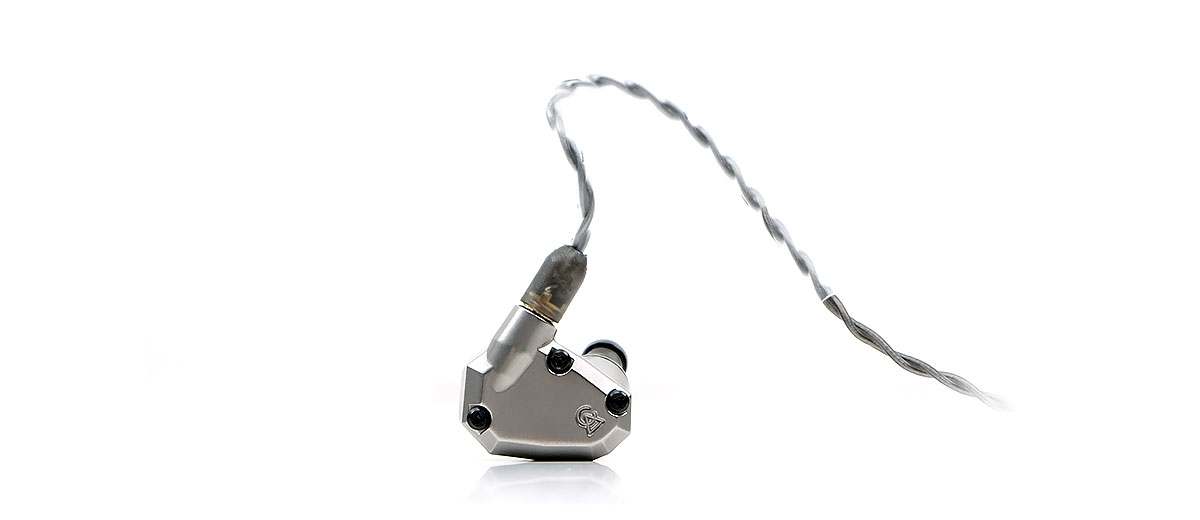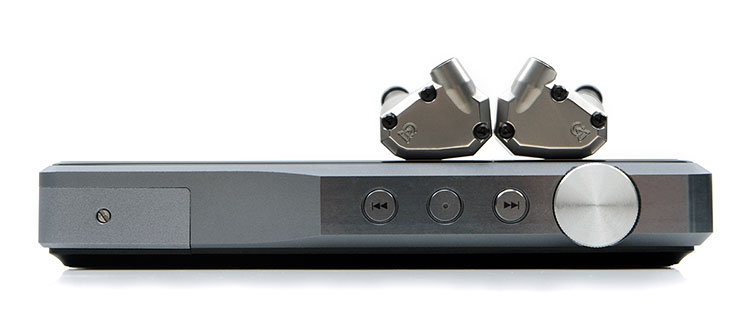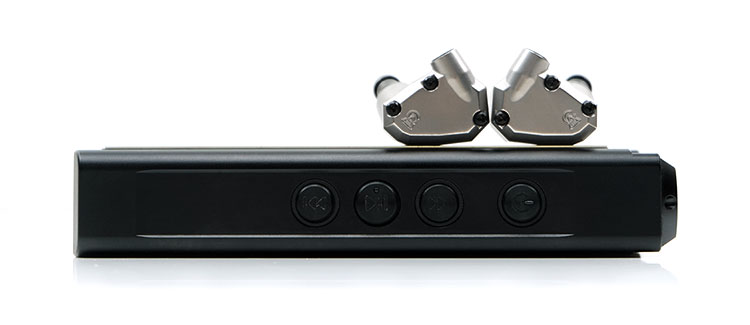Sound Impressions
Coherence
Campfire Audio has always been good at stamping a new IEM with a distinct personality or unique sound signature. The Ara is no different in that respect with a neutral almost reference-like expansive tuning and a hint of natural warmth, quite unlike anything they have done before.
More than that and this is something you are going to hear a lot about on this page, is the remarkably coherent tuning of the Ara.
Considering the Ara has no electronic crossover, something typical for a multi-driver design, the transitions between the grouped driver frequency bands are almost seamless.
That’s bass to mids and upper mids to the highs. Something that helps to deliver a very consistent instrumental timbre and a finely balanced and natural-sounding vocal performance.
Of no doubt, the new midrange driver CA first used in the Solaris SE and now in the Ara is playing a major role here in tightening up the midrange and in turn, delivering a much more consistent voicing.
Control
A lot of this is also coming from a more refined understanding by Campfire Audio in terms of how to tune each driver group consistently for a purpose.
Four drivers on the low end from yesteryear might have meant a robust bass response or playing to the masses. Older models with T.A.E.C signatures would similarly have been tuned to prove their worth with plenty of treble presence.
The Ara bucks that trend with a level of elevation that has very few dips and peaks right up to 1k. You could argue that there is a slight bias to the mids and treble and yes, your listening focus will be drawn more to that region due to an energetic rise from around 2k to the upper treble.
However, even that jump remains fairly linear with only some minor bumps from an otherwise straight line from 3k right up to 8k.
That controlled transition from mids to treble ensures that higher pitching instruments on the Ara have a genuinely nice harmonic balance without any loss of articulation or artificial masking dips to achieve that.
There is no exaggerated upper treble either or a muted lower treble. If anything, they have eased off the upper treble emphasis from the Andromeda just a shade which in turn keeps the tone pleasingly hi-fidelity without any peaky BA harshness.
Staging
The Ara has much more of a width and height emphasis as opposed to depth and power tuning. If you want the power then Campfire Audio’s Solaris range is the right pick with its planted dynamic driver. You could argue that even the classic Andromeda sound signature has more low-end physicality.
What the Ara offers instead is more neutral and linear but more importantly, well-defined and articulate right down to 20Hz. CA has ensured that the 4-driver low-end tuning avoids typical single BA bass roll-off so whilst not bountiful it is dutiful meaning everything on the lower registers gets picked up very easily.
If you do need tuning with a little more low-end emphasis or ‘bounce’ then I suggest swapping to the Final E tips. The foams retain that mid-bass warmth but they can often detach you from the experience in the process.
I suspect the longer stem length pulling the nozzle tip back from the canal might dim the immediacy of the Ara sound signature.
The Final E tips roll up the nozzle a bit more so the Ara sits closer to the ‘second bend’ in your ear canal. In doing so, you get a qualitative upgrade in perceived low-end dynamics and more immersion into Ara’s excellent imaging capability.
Positioning
Vocals are crystal clear and forward with a 1-2k bump yet imbued with a natural overtone from that smooth treble tuning so they do not sound sharp or overly contrasted at the same time.
That clarity also comes without any aggressive dips in the lower mids so instruments are not thinned out or placed well behind the vocals.
There is a beautiful solidity and balance to how the Ara’s delivers instrumental notes yet the staging in the mids is open enough to ensure neither vocal nor instrument is competing for the same space.
You get what I would call a classic high-fidelity stereo presentation from the Ara.
Timbre
The Ara’s timbre is certainly BA but the coherent tuning from top to bottom combined with a small emphasis on the mid-bass and vocal presence ensures it is not a dry BA timbre.
There is a natural lilt in those articulate instrumental notes with some very nicely detailed texture to flesh it out also. The slight fading of the upper treble from the more aggressive contrast of the Solaris top-end takes a lot of potential heat out of the Ara’s coloration and keeps the attack just slightly to the liquid side which I prefer.
This is not an overly sweet tone or lush tone; the decay is on the shorter side for that to happen. The harmonic balance is very even for me between even and odd, lower and upper. I am almost full circle here on that coherence point such is Ara’s timbral consistency.
If your bag is jazz, the classics, or acoustical pieces the Ara is perfect for string, woodwind, and percussion reproduction. Especially hi-hat and cymbal brush strokes which are fast, and detailed but never splashy or hot in tone.
Synergy
The ‘New’ Efficiency
The Ara is rated at 8.5Ω and 94 dB SPL. Now before you go spitting your coffee out and firing up the nuclear-powered desktop amp, that 94dB is not measured in the same manner as previous CA monitors which often had ratings of up to 115 dB SPL. Ara is not a planar territory inefficient monitor and here is why at a high level.
mVrms
If you note in previous reviews such as the Solaris and Andromeda, that SPL dB rating is weighted by mW. With the Ara, (including Solaris 2020 and Andromeda 2020), the SPL dB is still measured against the standard 1kHz (Pascal) weighting.
However, now the number of volts or mVrms required to achieve that 94dB rating is determined rather than the mW at a certain impedance level.
The argument being is that it suddenly becomes an impedance-agnostic discussion because impedance is not a calculated factor when measuring mVrms. It is when you measure in mW which then creates all sorts of marketing permutations.
That means every single CA IEM will have a 94dB rating and the differentiator now will be how much voltage is required to achieve it. In this case, the Ara requires 7.094mVrms to hit the mark, whereas the Solaris 2020 requires 6.54mVrms and the Andromeda 2020 7.01 mVrms.
Of the three, the Ara is just marginally more demanding to drive than the Andromeda 2020 and the Solaris is still the most efficient.
Impedance Factor
Just to note, however, impedance still should not be ignored here. Impedance matching is still quite relevant and output stages with higher than expected impedance ratings can still skew the 8.5Ω Ara’s FR such as the original HiBy R6 and the Shanling M2s.
This was no different from the original Andromeda’s performance which has a 12.8Ω rating.
Rear World Testing
Now we have refrained from commenting on the 2020 versions of the Solaris and Andromeda as CA has advised to burn them in first but we will compare more in their reviews at a later stage.
However, we did a test against the original Andromeda and Solaris and the Ara came right in the middle of these two in terms of sensitivity.
That means the Ara is super easy to drive as I expected it would be given its relative proximity to the Solaris’s and Andromeda’s ratings.
However, the hiss levels of the Ara were lower than the Andromeda and I do wonder if that has something to do with the change of BA midrange drivers compared to the original Andromeda.
On the N6ii/E02 and FiiO’s M11 balanced outputs, the noise floor may be too high for some using the Ara. However, the Ara hiss levels were lower on all the other DAPs in comparison to the original Andromeda, including the E02.
This includes the FiiO M15 which was a very good pairing for noise with the Ara in both balanced and unbalanced settings. I also had a similar finding for the iBasso DX220/AMP1 MKII.
The Lotoo PAW Gold Touch also had a very black background with the Ara though it does perform similarly with the Andromeda.
Pairings
Since they do not need a lot of power just about every source is daily play in terms of driving the Ara well. What is more important is the tonal synergy and dynamic range.
The Ara plays exceedingly well with DAPs that have a highly resolving signature and a black background.
Since my gut instinct is that most will use the Ara for high-fidelity stuff, that back background is going to be super important that is why I ended up using the Ara more often than not with the Lotoo PAW 6000 or the PAW Gold Touch.
Both delivered exceptional dynamic range with the PAW 6000 thickening the Ara low-end a bit more and the PAW Touch taking it to the next level in terms of complex imaging and resolution.
I have to give a special mention to FiiO’s M15. This is a straight-down-the-middle reference-tuned DAP with excellent articulation and something I think works well with Ara’s similarly studied focus on detail.
The noise floor is very low also which makes it a doozy for quieter reference-level playback. The M15’s airier top-end also plays to the strengths of the Ar’s slight bias beyond 1k for listening emphasis.







